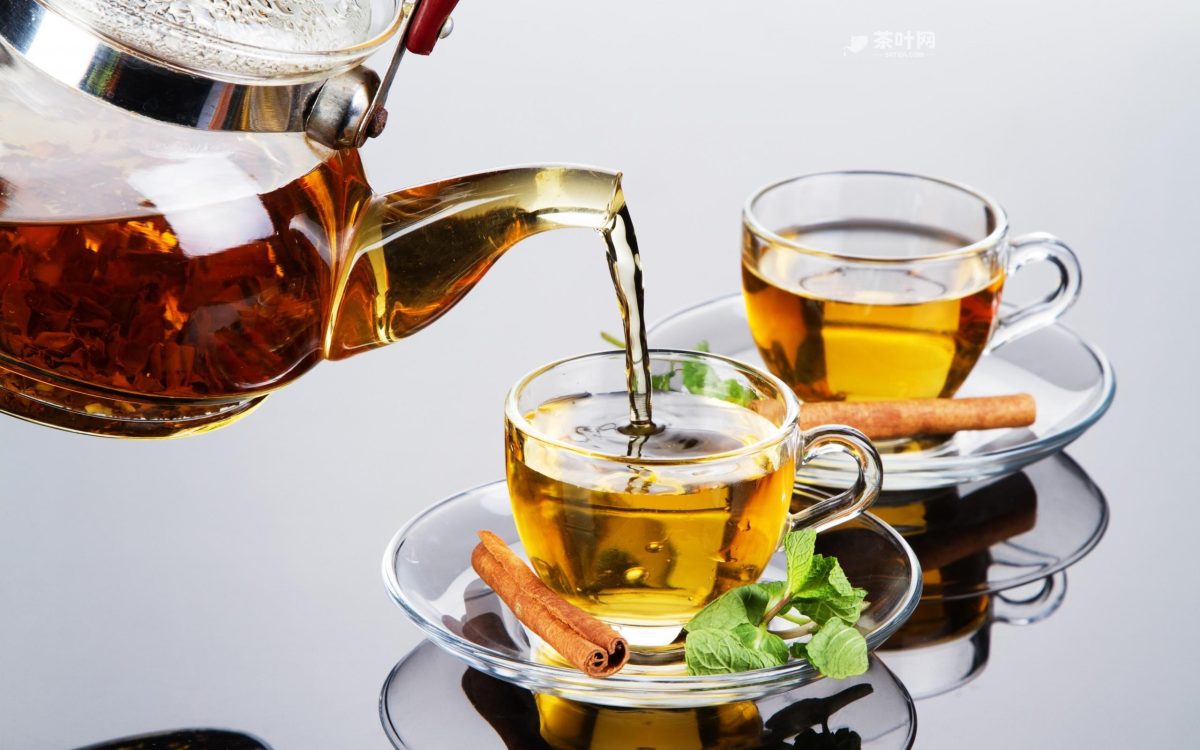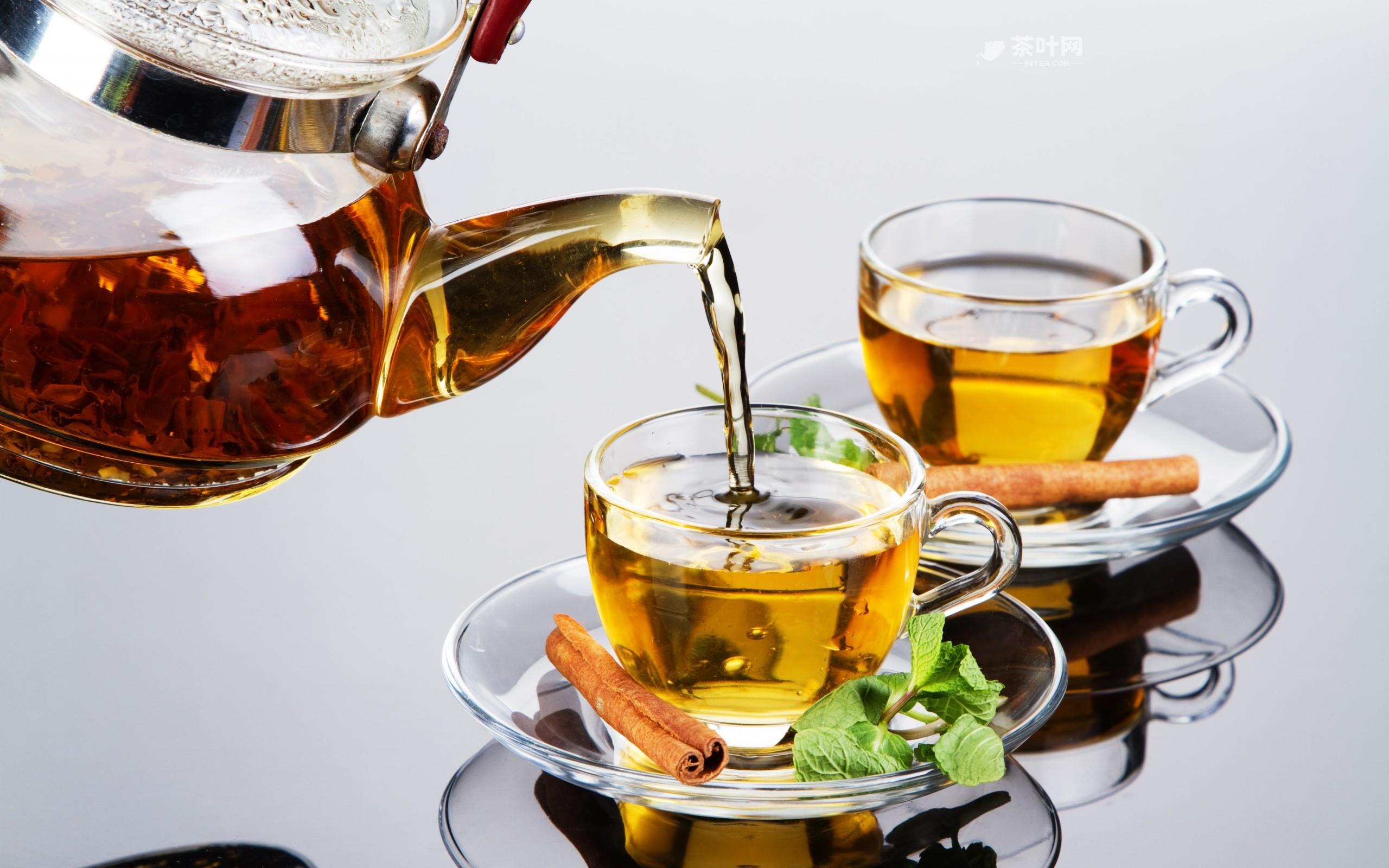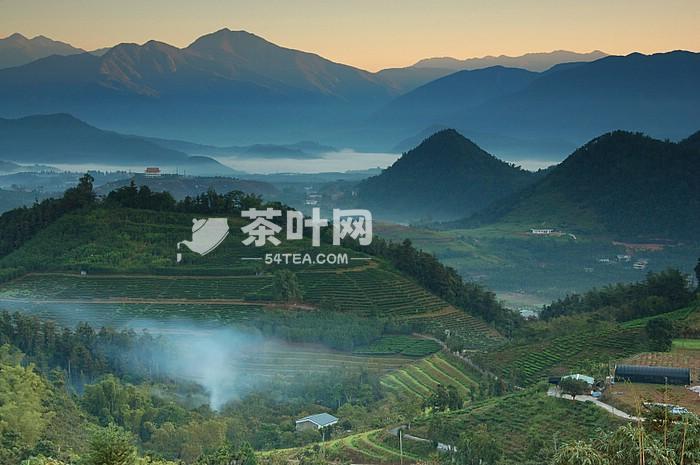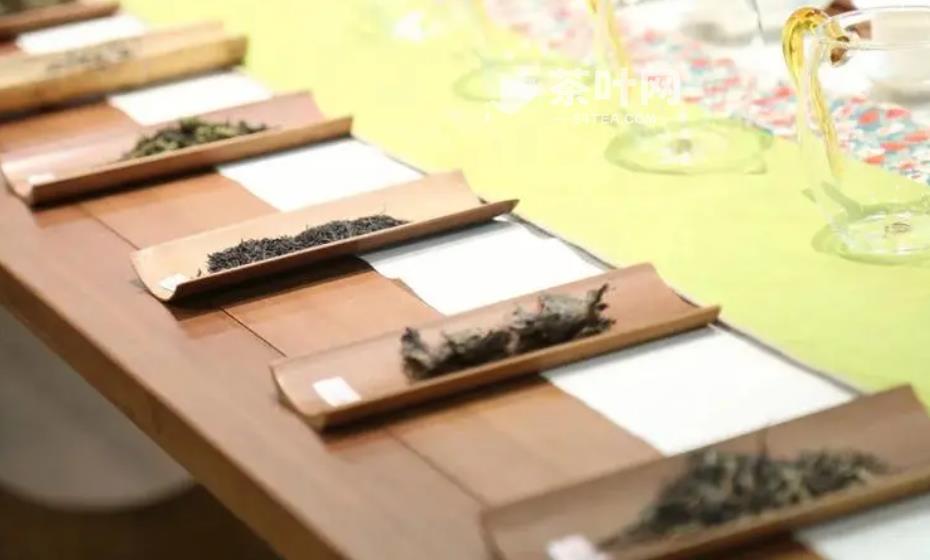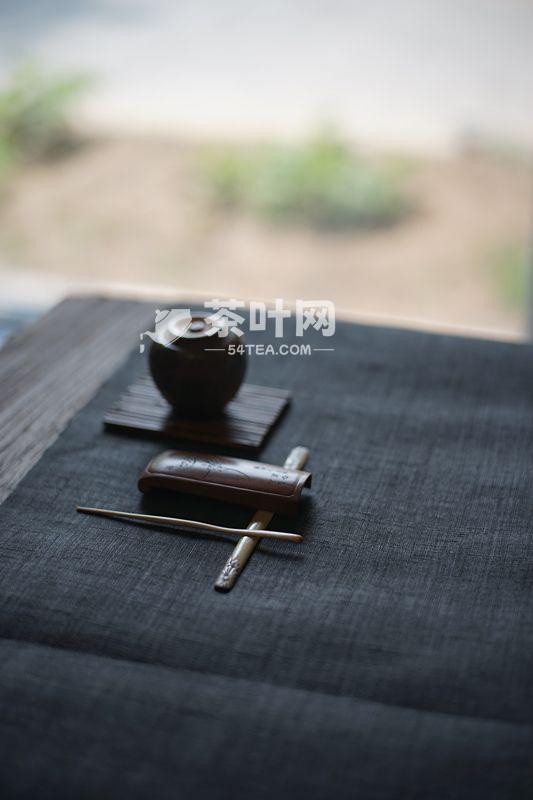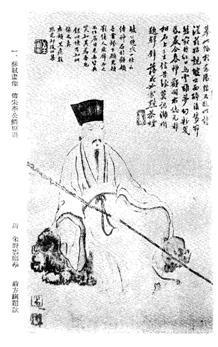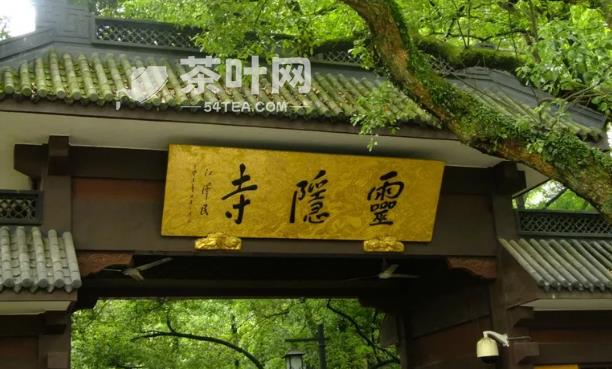The historical origins of gaiwan, tracing the roots of the party know that gaiwan tea originated in Sichuan, is an important element of the ancient culture of Sichuan. MQB Tea Net
Shu people drink tea in a more unique way by the tea cover, tea bowl and tea boat son of three parts, also known as the “three talents bowl”. The “three talents” refer to heaven, earth and people, with the cover for heaven, the tray for earth and the bowl for people, implying the meaning of heaven and earth and people. MQB Tea Net
 MQB Tea
MQB Tea
The history of Gai Bowl Tea is very long, rumored to have originated in the Tang Dynasty. The Tang Dynasty, “Zifu Record” Volume II, “Tea Tuozi” article: “Jianzhong Shu Cui Ning’s daughter to tea cups without lining, sick of ironing fingers, take the saucer to bear the caucasian and cups pouring, is the center of the saucer with a wax ring, and the cups are set …… for all people for the convenience, used in the world. It is after the passer more ring its bottom, the more new its system, to a hundred shapes.” MQB Tea
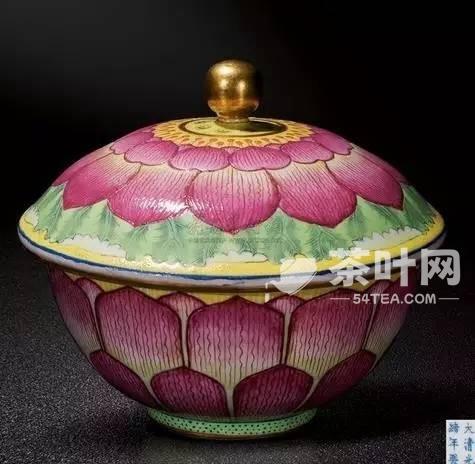 MQB tea net
MQB tea net
Qing dynasty guangxu pastel lotus pattern cover bowl (above)
Jianzhong was the reign name of Emperor Dezong of the Tang Dynasty, and Cui Ning was the then Minister of the Xichuan Province and Prefect of Chengdu. More than 1,200 years ago, the daughter of Chengdu’s highest administrator sipped tea, but her delicate fingers were burned by the cup, so she planned to think of a way to solve the problem once and for all. MQB Tea Net
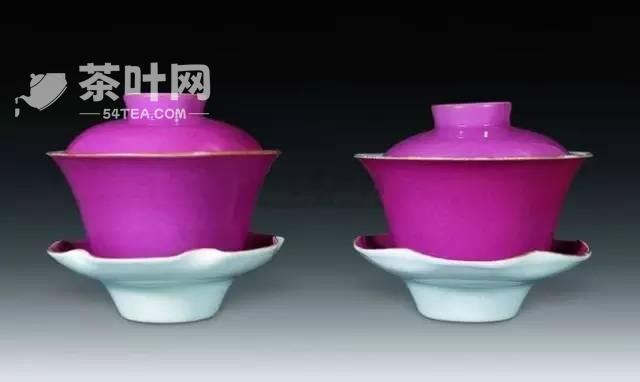 MQB Tea
MQB Tea
Qing Dynasty Rouge Glazed Covered Bowls (Pair) (Above)
She took out a saucer, put the teacups on it, and drank tea with the saucer on her end, so that she couldn’t burn her hands. However, the teacups were still easy to tip over. It was a good thing that Ms. Cui had been trapped in her boudoir for a long time, and had a lot of time on her hands. After a few trials, she finally discovered that wax could hold the teacups in place. mqb tea.com
In order to make the shape more beautiful, Ms. Cui asked the craftsman to make a lacquer ring instead of a wax ring to hold the teacup. When she was finished, she took her invention to her father and offered it to him. Through the mouth of Mr. Cui, Miss Cui’s invention was spread to the world and finally became popular in the world. MQB Te a Net
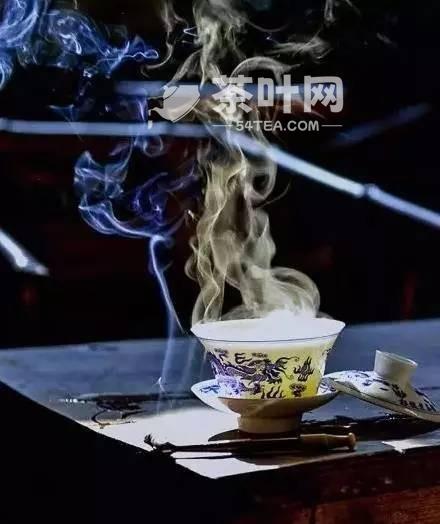 MQB Tea Network
MQB Tea Network
Today, Chengdu people use gaiwan tea, also added a tea cover. And in the guest to guest, crowded teahouse, porcelain saucer tea boat because of the heavier and fragile, it is often for the lightweight and strong copper and aluminum tea boat instead. MQB Tea Net
 MQB tea net
MQB tea net
Qing dynasty qianlong gold and famille-rose floral gaiwan a pair (above)
The tea bowl tea does not talk about red tape, whether in the noisy tea store, or in the exquisite decoration of the elegant room, hold a tea bowl tea, tea cover gently dial tea, there is always a rich flavor of life comes. mqb tea net
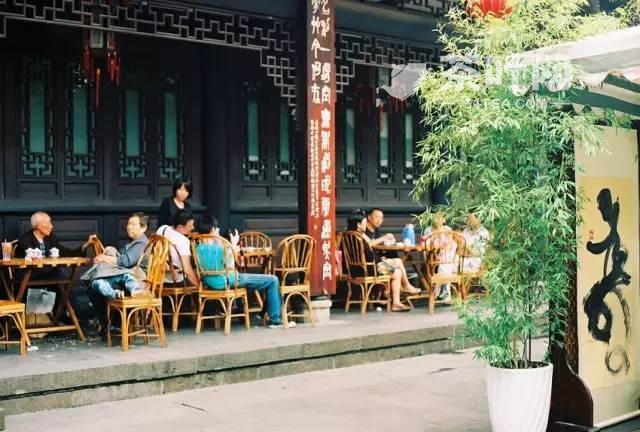 MQB Tea Network
MQB Tea Network
“Bao Ding tea idle smoke is still green, the window chess strike finger is still cool.” Sichuan this place, both the Baoding, also have a window, tea idle chess strike is abound, not rare! A cup of tea in a covered bowl, drink the appearance of the world’s peace and quiet of the years. mqb tea net
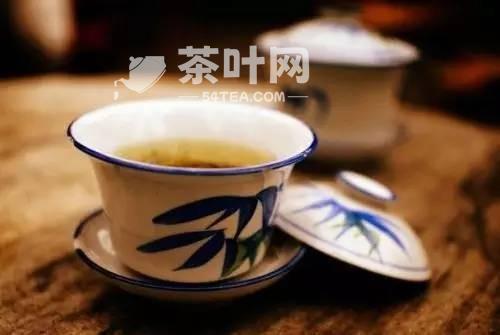 MQB Tea Net
MQB Tea Net
Mr. Lu Xun in the article “drinking tea” wrote: “Drinking good tea, is to use the cover bowl. So I used a covered bowl. Sure enough, after brewing, the color is clear and sweet, slightly fragrant and little bitter, it is indeed good tea.” Among the many bowls, calendars, pots and cups, why did Mr. Lu Xun appreciate the gaiwan alone? Among them, there are reasons. MQB Tea Net
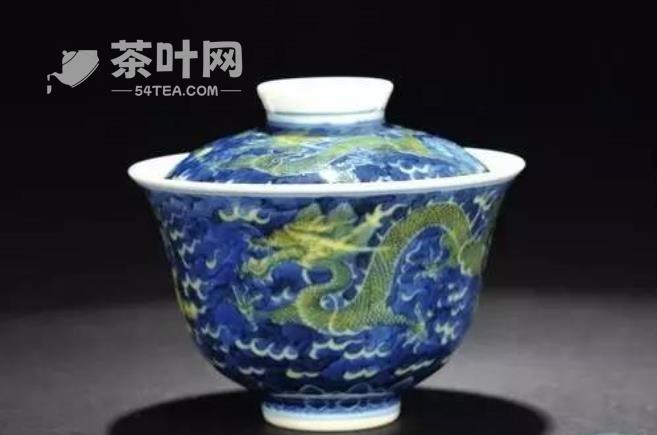 MQB tea net
MQB tea net
Qing Guangxu Qinghua yellow color cloud dragon pattern cover bowl (above)
Anyone who understands the tea ceremony knows that tea is particularly concerned about “color, smell, taste, look at the shape”. Cups and pots are not conducive to detecting the color and shape of the tea, nor is it conducive to the regulation of the strength of the tea soup. MQB Tea Net
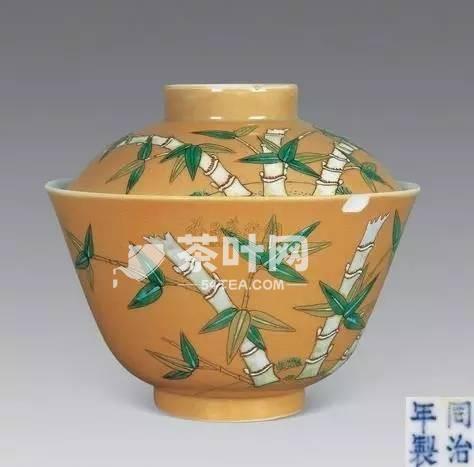 MQB Tea Net
MQB Tea Net
Qing dynasty with yellow glaze famille-rose bamboo pattern cover bowl (above)
And gaiwan tea set, there are bowls, there are cover, there are boats, unique shape, exquisite production. Tea bowl on the big down small, cover can be into the bowl, the tea boat to do the bottom of the support. MQB Tea Net
 MQB Tea Bowl
MQB Tea Bowl
When you drink tea, the cover is not easy to slip off, and the tea boat as a support and free from the pain of hot hands. And only need to end the tea boat can stabilize the center of gravity, tea and do not have to uncover the cover, only half-open half-close, the tea leaves are not imported, the tea broth can be slowly percolate out, very pleasant, to avoid the trouble of the pot blocking the cup spit. MQB Tea Net
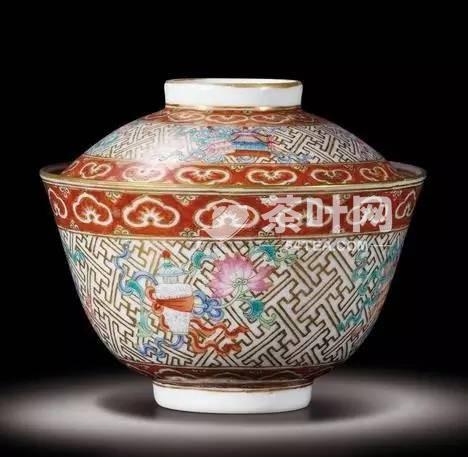 MQB Tea
MQB Tea
Qing Guangxu pink color alum red gold eight treasures dragon and phoenix pattern cover bowl (above)
Covered bowl tea, the benefits are all in a cover. Covered bowl tea tea cover in the bowl, if you want to tea thicker, available tea cover in the water gently scrape a scrape, so that the whole bowl of tea up and down, light scrape is light, heavy scrape is thick, is its wonderful. MQB Tea Net
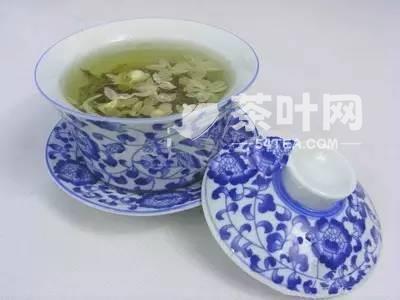 MQB Tea Network
MQB Tea Network
“Cabbage, green salt, and rice, and chrysanthemum tea in a pot of heavenly water”. The most prestigious gaiwan tea is in Beijing. In the eyes of Beijingers, gaiwan is the treasures of tea utensils, and flower tea, especially jasmine tea is a fine product of tea, the combination of the two, soaked out of the Beijing people a steaming heart. MQB Tea Net
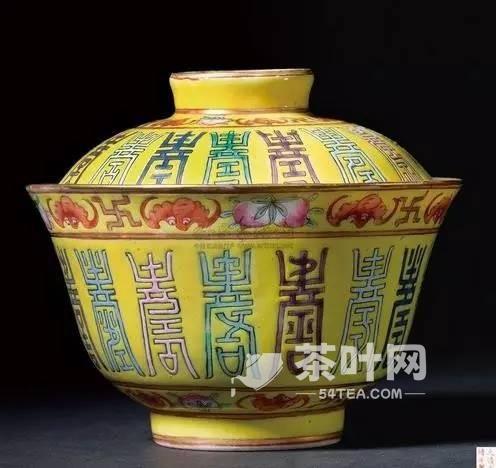 MQB Tea
MQB Tea
Qing Guangxu yellow background pastel color longevity pattern gaiwan (above)
Gai Bowl Tea, in the hands of Beijingers, reveals the essence of its mesmerizing. Gently lift the lid of the bowl, blow, and then use the lid of the bowl to brush away some of the tea leaves, take a sip, teeth and cheeks. MQB Tea Net
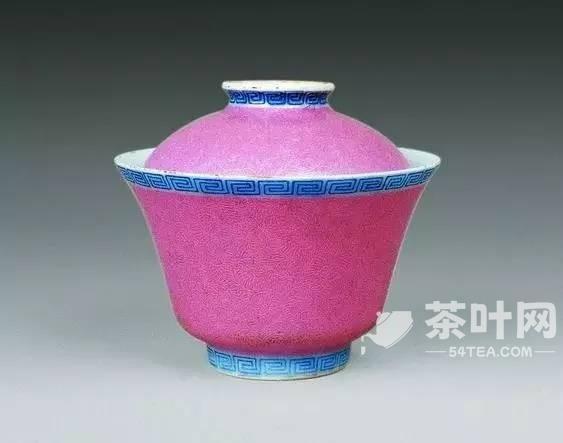 MQB Tea Net
MQB Tea Net
Qing Dynasty Rouge Ground Rolling Road Small Covered Bowl (above)
That Cao Xueqin is also a cover bowl tea fan: “Miao Yu personally held a begonias style carved lacquer filled with gold cloud dragon to offer life to a small tea plate, which put a into the kiln five color small cover bell, held with Jia mother …… crowd is a color of official kiln stripped and filled with white cover bowl.” MQB Tea
 MQB tea net
MQB tea net
Sitting in the garden, the sky is blue, the water is green, the flowers are red, the bridge is nine curved, the eaves are flying, the floor tiles are hexagonal, the windows are skeletonized, the tea is Biluochun, the water well water, the only thing that’s the same is a bowl with a lid. MQB Tea Net
 MQB tea net
MQB tea net
Qing Qianlong Assorted Glaze Covered Bowls (Five) (Above)
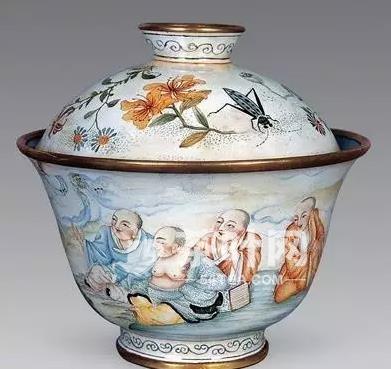 MQB Tea
MQB Tea
Qing Dynasty Copper Painted and Enameled Lohan Covered Bowl (Above)
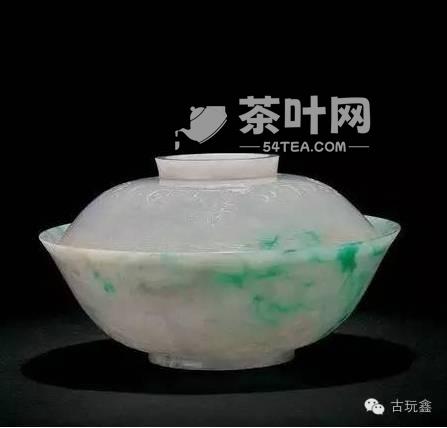 MQB Tea
MQB Tea
Qing Dynasty Jade Bowl (above)
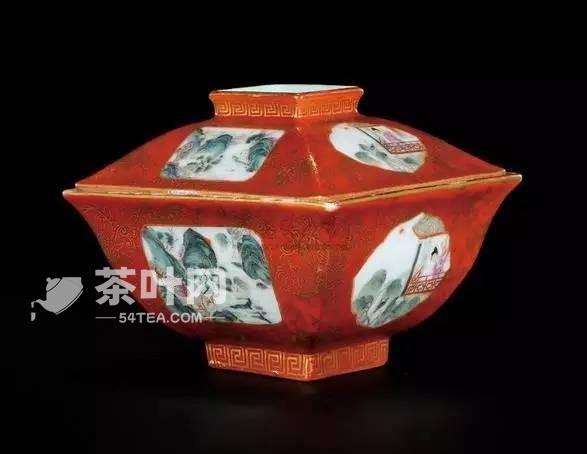 MQB Tea
MQB Tea
Qianlong Coral-red and gold-painted open landscape figures square lidded bowl (above)
 MQB Tea
MQB Tea
Black ground cloisonné Bogu Gai Bowl (above)
 MQB Tea
MQB Tea
Qing Dynasty Carmine Red Chrysanthemum Breaking Lidded Bowl (above)
 MQB Tea
MQB Tea
Early Qing Dynasty Jasper Lotus Patterned Covered Bowl (above)
 MQB Tea
MQB Tea
Qing Dynasty Pastel Lotus Flower Covered Bowl (above)
 MQB Tea
MQB Tea
Qing Daoguang Pastel-colored Covered Bowls with Wushuang Spectrum (Two Pieces) (Above)
 MQB Tea
MQB Tea
Qing Daoguang famille-rose enameled floral bowl on yellow ground (above)
 MQB Tea
MQB Tea
Qing Daoguang gold-colored bowl with orchids (above)
 MQB Tea
MQB Tea
Qing Daoguang famille-rose enameled bowls with auspicious birthday wishes (2 pieces) (above)
 MQB Tea
MQB Tea
Qing Daoguang coral-red and gold-painted bowls (2 pcs.)
 MQB Tea
MQB Tea
Qing Daoguang blue flower pattern covered bowl (above)
 MQB Tea Net
MQB Tea Net
Qing Daoguang turquoise and green ground famille rose enameled covered bowl with longevity design (above)
 MQB Tea
MQB Tea
Qing Guangxu Pastel Lotus Flower Covered Bowls (Two Pieces) (Above)
 MQB Tea
MQB Tea
Qing Guangxu Pastel Lotus Flower Covered Bowl (Two Pieces) (Above)
 MQB Tea
MQB Tea
Qing Guangxu Blue Glaze Carved Longevity Character Covered Bowl (Above)
 MQB Tea
MQB Tea
Qing Guangxu Famille rose enameled bird and flower covered bowl (above)
 MQB Tea
MQB Tea
Qing Guangxu Carmine Red Glaze Covered Bowl (Above)
 MQB Tea
MQB Tea
Qing Jiaqing famille-rose enameled gilt bowl with eight treasures (above)
 MQB Tea
MQB Tea
Qing Jiaqing blue and red dragon and phoenix design covered bowl (above)
 MQB Tea
MQB Tea
Qing dynasty qianlong porcelain bowl with overgrown bamboo and stone design (above)
 MQB Tea
MQB Tea
Qing dynasty qianlong bean green glaze tea cover bowl (above)
 MQB Tea
MQB Tea
Qing dynasty qianlong alum red and gold dragon design high footed bowl (above)
 MQB Tea
MQB Tea
Qing dynasty qianlong imitation carving lacquer brocade ground longevity lotus petal pattern cover bowl (above)
 MQB Tea
MQB Tea
Qing dynasty red glaze covered bowls (pair) (above)
 MQB Tea
MQB Tea
Qing dynasty qianlong bright pink glass gold covered bowl (above)
 MQB Tea
MQB Tea
Qing dynasty qianlong green and white jade carving taotie pattern cover bowl (pair) (above)
 MQB Tea
MQB Tea
Qing dynasty qianlong blue and white enameled bowls with “a group of harmony” pattern (pair) (above)
 MQB Tea
MQB Tea
Qing dynasty famille-rose enameled blue and white covered bowls with “one hundred sons haunting the Lantern Festival” design (above)
 MQB Tea
MQB Tea
Qing dynasty qianlong famille-rose enameled bowl with carmine and purple ground (above)
 MQB Tea
MQB Tea
Qing Dynasty Jade Carved Auspicious Ruyi Covered Bowls (Pair) (Above)
 MQB Tea
MQB Tea
Qing dynasty tongzhi famille-rose enameled gaiwan (above)
 MQB Tea
MQB Tea
Qing Tongzhi Green Glaze Covered Bowls with Gold Stroke (Pair) (Above)
 MQB Tea
MQB Tea
Qing dynasty tongzhi blue and red alum red cloud and dragon design large covered bowl (above)
 MQB Tea
MQB Tea
Qing Dynasty Yongzheng Lidded Bowl with Flowers in Doucai Color (Above)
 MQB Tea
MQB Tea
Qing dynasty Yongzheng large bowl with bird and flower design (above)
 MQB Tea
MQB Tea
Qing dynasty Yongzheng doucai Jiuqiu landscape covered bowl (above)
 MQB Tea
MQB Tea
Mid Qing Dynasty White Jade Lidded Bowl with Four Seasons and Three Dolors (Above)
 MQB Tea
MQB Tea
Eighteenth Century Udon-glazed Covered Bowls (Pair) (Above)
 MQB Tea
MQB Tea
Yuan Green and White Jade Covered Bowls (Above)
 MQB Tea
MQB Tea
Mid Qing Dynasty Black Lacquer and Gold Peony Shou Zi Patterned Covered Bowls (above)
 MQB Tea
MQB Tea
Qing dynasty Yongzheng yellow copper enameled bowl with entwined flowers (above)
 MQB Tea
MQB Tea
Qing Yongzheng famille-rose enameled bowls with figures (2 pieces) (above)
Celadon gaiwan, white porcelain gaiwan, black porcelain gaiwan, colored porcelain gaiwan, and even linglong porcelain gaiwan, heaven and earth gaiwan tea, drink out of the years, taste a hundred flavors of life !
The historical origins of gaiwan, tracing the roots of the party know that gaiwan tea originated in Sichuan, is an important element of the ancient culture of Sichuan. MQB Tea Net
Shu people drink tea in a more unique way by the tea cover, tea bowl and tea boat son of three parts, also known as the “three talents bowl”. The “three talents” refer to heaven, earth and people, with the cover for heaven, the tray for earth and the bowl for people, implying the meaning of heaven and earth and people. MQB Tea Net
 MQB Tea
MQB Tea
The history of Gai Bowl Tea is very long, rumored to have originated in the Tang Dynasty. The Tang Dynasty, “Zifu Record” Volume II, “Tea Tuozi” article: “Jianzhong Shu Cui Ning’s daughter to tea cups without lining, sick of ironing fingers, take the saucer to bear the caucasian and cups pouring, is the center of the saucer with a wax ring, and the cups are set …… for all people for the convenience, used in the world. It is after the passer more ring its bottom, the more new its system, to a hundred shapes.” MQB Tea
 MQB tea net
MQB tea net
Qing dynasty guangxu pastel lotus pattern cover bowl (above)
Jianzhong was the reign name of Emperor Dezong of the Tang Dynasty, and Cui Ning was the then Minister of the Xichuan Province and Prefect of Chengdu. More than 1,200 years ago, the daughter of Chengdu’s highest administrator sipped tea, but her delicate fingers were burned by the cup, so she planned to think of a way to solve the problem once and for all. MQB Tea Net
 MQB Tea
MQB Tea
Qing Dynasty Rouge Glazed Covered Bowls (Pair) (Above)
She took out a saucer, put the teacups on it, and drank tea with the saucer on her end, so that she couldn’t burn her hands. However, the teacups were still easy to tip over. It was a good thing that Ms. Cui had been trapped in her boudoir for a long time, and had a lot of time on her hands. After a few trials, she finally discovered that wax could hold the teacups in place. mqb tea.com
In order to make the shape more beautiful, Ms. Cui asked the craftsman to make a lacquer ring instead of a wax ring to hold the teacup. When she was finished, she took her invention to her father and offered it to him. Through the mouth of Mr. Cui, Miss Cui’s invention was spread to the world and finally became popular in the world. MQB Te a Net
 MQB Tea Network
MQB Tea Network
Today, Chengdu people use gaiwan tea, also added a tea cover. And in the guest to guest, crowded teahouse, porcelain saucer tea boat because of the heavier and fragile, it is often for the lightweight and strong copper and aluminum tea boat instead. MQB Tea Net
 MQB tea net
MQB tea net
Qing dynasty qianlong gold and famille-rose floral gaiwan a pair (above)
The tea bowl tea does not talk about red tape, whether in the noisy tea store, or in the exquisite decoration of the elegant room, hold a tea bowl tea, tea cover gently dial tea, there is always a rich flavor of life comes. mqb tea net
 MQB Tea Network
MQB Tea Network
“Bao Ding tea idle smoke is still green, the window chess strike finger is still cool.” Sichuan this place, both the Baoding, also have a window, tea idle chess strike is abound, not rare! A cup of tea in a covered bowl, drink the appearance of the world’s peace and quiet of the years. mqb tea net
 MQB Tea Net
MQB Tea Net
Mr. Lu Xun in the article “drinking tea” wrote: “Drinking good tea, is to use the cover bowl. So I used a covered bowl. Sure enough, after brewing, the color is clear and sweet, slightly fragrant and little bitter, it is indeed good tea.” Among the many bowls, calendars, pots and cups, why did Mr. Lu Xun appreciate the gaiwan alone? Among them, there are reasons. MQB Tea Net
 MQB tea net
MQB tea net
Qing Guangxu Qinghua yellow color cloud dragon pattern cover bowl (above)
Anyone who understands the tea ceremony knows that tea is particularly concerned about “color, smell, taste, look at the shape”. Cups and pots are not conducive to detecting the color and shape of the tea, nor is it conducive to the regulation of the strength of the tea soup. MQB Tea Net
 MQB Tea Net
MQB Tea Net
Qing dynasty with yellow glaze famille-rose bamboo pattern cover bowl (above)
And gaiwan tea set, there are bowls, there are cover, there are boats, unique shape, exquisite production. Tea bowl on the big down small, cover can be into the bowl, the tea boat to do the bottom of the support. MQB Tea Net
 MQB Tea Bowl
MQB Tea Bowl
When you drink tea, the cover is not easy to slip off, and the tea boat as a support and free from the pain of hot hands. And only need to end the tea boat can stabilize the center of gravity, tea and do not have to uncover the cover, only half-open half-close, the tea leaves are not imported, the tea broth can be slowly percolate out, very pleasant, to avoid the trouble of the pot blocking the cup spit. MQB Tea Net
 MQB Tea
MQB Tea
Qing Guangxu pink color alum red gold eight treasures dragon and phoenix pattern cover bowl (above)
Covered bowl tea, the benefits are all in a cover. Covered bowl tea tea cover in the bowl, if you want to tea thicker, available tea cover in the water gently scrape a scrape, so that the whole bowl of tea up and down, light scrape is light, heavy scrape is thick, is its wonderful. MQB Tea Net
 MQB Tea Network
MQB Tea Network
“Cabbage, green salt, and rice, and chrysanthemum tea in a pot of heavenly water”. The most prestigious gaiwan tea is in Beijing. In the eyes of Beijingers, gaiwan is the treasures of tea utensils, and flower tea, especially jasmine tea is a fine product of tea, the combination of the two, soaked out of the Beijing people a steaming heart. MQB Tea Net
 MQB Tea
MQB Tea
Qing Guangxu yellow background pastel color longevity pattern gaiwan (above)
Gai Bowl Tea, in the hands of Beijingers, reveals the essence of its mesmerizing. Gently lift the lid of the bowl, blow, and then use the lid of the bowl to brush away some of the tea leaves, take a sip, teeth and cheeks. MQB Tea Net
 MQB Tea Net
MQB Tea Net
Qing Dynasty Rouge Ground Rolling Road Small Covered Bowl (above)
That Cao Xueqin is also a cover bowl tea fan: “Miao Yu personally held a begonias style carved lacquer filled with gold cloud dragon to offer life to a small tea plate, which put a into the kiln five color small cover bell, held with Jia mother …… crowd is a color of official kiln stripped and filled with white cover bowl.” MQB Tea
 MQB tea net
MQB tea net
Sitting in the garden, the sky is blue, the water is green, the flowers are red, the bridge is nine curved, the eaves are flying, the floor tiles are hexagonal, the windows are skeletonized, the tea is Biluochun, the water well water, the only thing that’s the same is a bowl with a lid. MQB Tea Net
 MQB tea net
MQB tea net
Qing Qianlong Assorted Glaze Covered Bowls (Five) (Above)
 MQB Tea
MQB Tea
Qing Dynasty Copper Painted and Enameled Lohan Covered Bowl (Above)
 MQB Tea
MQB Tea
Qing Dynasty Jade Bowl (above)
 MQB Tea
MQB Tea
Qianlong Coral-red and gold-painted open landscape figures square lidded bowl (above)
 MQB Tea
MQB Tea
Black ground cloisonné Bogu Gai Bowl (above)
 MQB Tea
MQB Tea
Qing Dynasty Carmine Red Chrysanthemum Breaking Lidded Bowl (above)
 MQB Tea
MQB Tea
Early Qing Dynasty Jasper Lotus Patterned Covered Bowl (above)
 MQB Tea
MQB Tea
Qing Dynasty Pastel Lotus Flower Covered Bowl (above)
 MQB Tea
MQB Tea
Qing Daoguang Pastel-colored Covered Bowls with Wushuang Spectrum (Two Pieces) (Above)
 MQB Tea
MQB Tea
Qing Daoguang famille-rose enameled floral bowl on yellow ground (above)
 MQB Tea
MQB Tea
Qing Daoguang gold-colored bowl with orchids (above)
 MQB Tea
MQB Tea
Qing Daoguang famille-rose enameled bowls with auspicious birthday wishes (2 pieces) (above)
 MQB Tea
MQB Tea
Qing Daoguang coral-red and gold-painted bowls (2 pcs.)
 MQB Tea
MQB Tea
Qing Daoguang blue flower pattern covered bowl (above)
 MQB Tea Net
MQB Tea Net
Qing Daoguang turquoise and green ground famille rose enameled covered bowl with longevity design (above)
 MQB Tea
MQB Tea
Qing Guangxu Pastel Lotus Flower Covered Bowls (Two Pieces) (Above)
 MQB Tea
MQB Tea
Qing Guangxu Pastel Lotus Flower Covered Bowl (Two Pieces) (Above)
 MQB Tea
MQB Tea
Qing Guangxu Blue Glaze Carved Longevity Character Covered Bowl (Above)
 MQB Tea
MQB Tea
Qing Guangxu Famille rose enameled bird and flower covered bowl (above)
 MQB Tea
MQB Tea
Qing Guangxu Carmine Red Glaze Covered Bowl (Above)
 MQB Tea
MQB Tea
Qing Jiaqing famille-rose enameled gilt bowl with eight treasures (above)
 MQB Tea
MQB Tea
Qing Jiaqing blue and red dragon and phoenix design covered bowl (above)
 MQB Tea
MQB Tea
Qing dynasty qianlong porcelain bowl with overgrown bamboo and stone design (above)
 MQB Tea
MQB Tea
Qing dynasty qianlong bean green glaze tea cover bowl (above)
 MQB Tea
MQB Tea
Qing dynasty qianlong alum red and gold dragon design high footed bowl (above)
 MQB Tea
MQB Tea
Qing dynasty qianlong imitation carving lacquer brocade ground longevity lotus petal pattern cover bowl (above)
 MQB Tea
MQB Tea
Qing dynasty red glaze covered bowls (pair) (above)
 MQB Tea
MQB Tea
Qing dynasty qianlong bright pink glass gold covered bowl (above)
 MQB Tea
MQB Tea
Qing dynasty qianlong green and white jade carving taotie pattern cover bowl (pair) (above)
 MQB Tea
MQB Tea
Qing dynasty qianlong blue and white enameled bowls with “a group of harmony” pattern (pair) (above)
 MQB Tea
MQB Tea
Qing dynasty famille-rose enameled blue and white covered bowls with “one hundred sons haunting the Lantern Festival” design (above)
 MQB Tea
MQB Tea
Qing dynasty qianlong famille-rose enameled bowl with carmine and purple ground (above)
 MQB Tea
MQB Tea
Qing Dynasty Jade Carved Auspicious Ruyi Covered Bowls (Pair) (Above)
 MQB Tea
MQB Tea
Qing dynasty tongzhi famille-rose enameled gaiwan (above)
 MQB Tea
MQB Tea
Qing Tongzhi Green Glaze Covered Bowls with Gold Stroke (Pair) (Above)
 MQB Tea
MQB Tea
Qing dynasty tongzhi blue and red alum red cloud and dragon design large covered bowl (above)
 MQB Tea
MQB Tea
Qing Dynasty Yongzheng Lidded Bowl with Flowers in Doucai Color (Above)
 MQB Tea
MQB Tea
Qing dynasty Yongzheng large bowl with bird and flower design (above)
 MQB Tea
MQB Tea
Qing dynasty Yongzheng doucai Jiuqiu landscape covered bowl (above)
 MQB Tea
MQB Tea
Mid Qing Dynasty White Jade Lidded Bowl with Four Seasons and Three Dolors (Above)
 MQB Tea
MQB Tea
Eighteenth Century Udon-glazed Covered Bowls (Pair) (Above)
 MQB Tea
MQB Tea
Yuan Green and White Jade Covered Bowls (Above)
 MQB Tea
MQB Tea
Mid Qing Dynasty Black Lacquer and Gold Peony Shou Zi Patterned Covered Bowls (above)
 MQB Tea
MQB Tea
Qing dynasty Yongzheng yellow copper enameled bowl with entwined flowers (above)
 MQB Tea
MQB Tea
Qing Yongzheng famille-rose enameled bowls with figures (2 pieces) (above)
Celadon gaiwan, white porcelain gaiwan, black porcelain gaiwan, colored porcelain gaiwan, and even linglong porcelain gaiwan, heaven and earth gaiwan tea, drink out of the years, taste a hundred flavors of life !
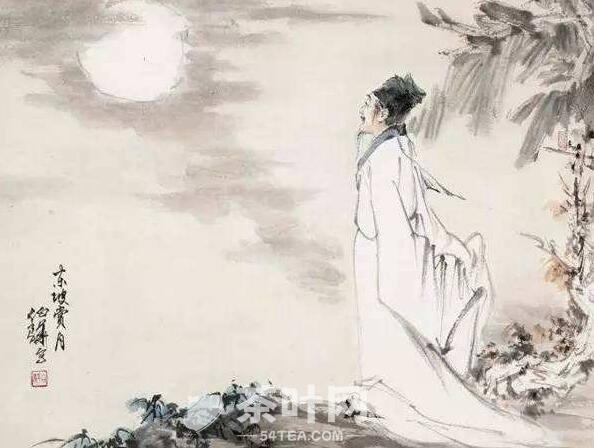 7rD Tea
7rD Tea


